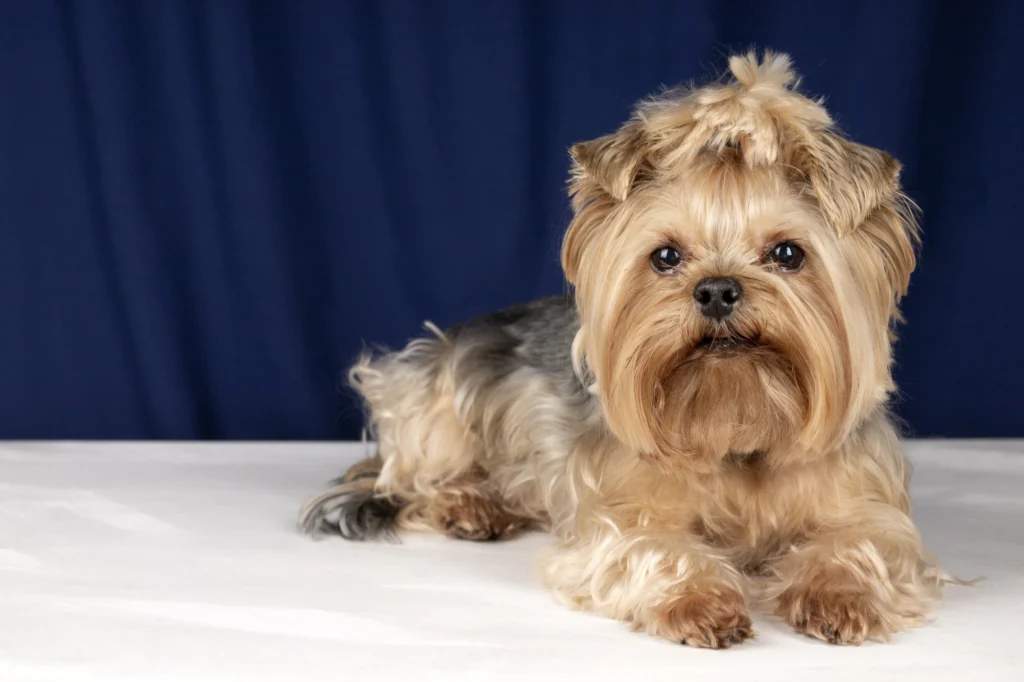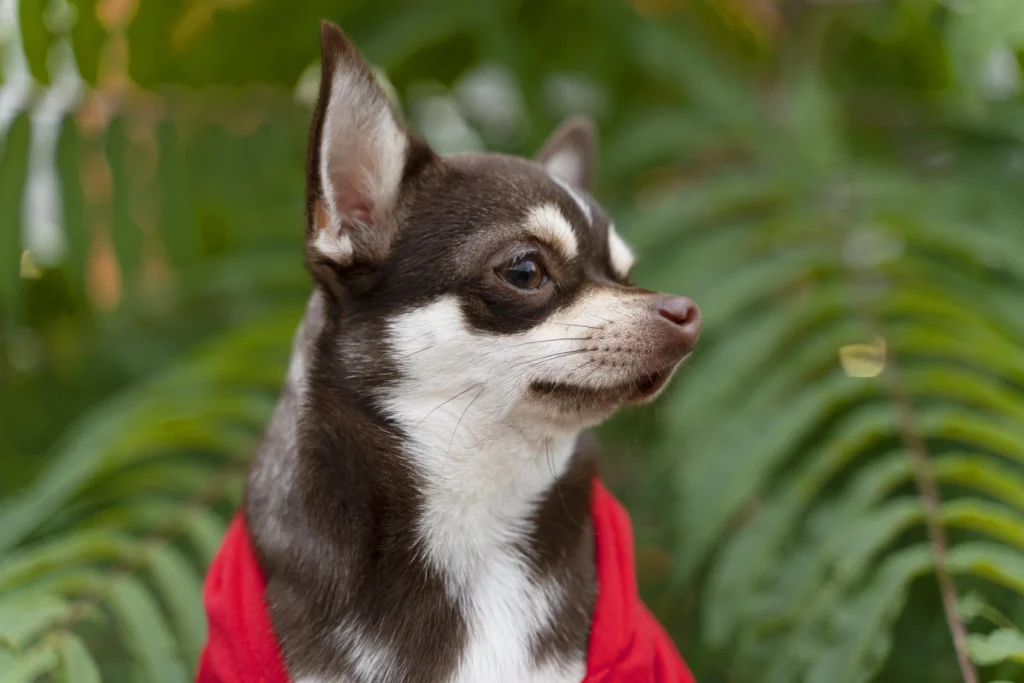What are small dog breeds, and why are they popular?
Small dog breeds are defined by most kennel clubs as dogs weighing under 25 pounds (≈11 kg) and standing under 16 inches (≈40 cm) at the shoulder. (AKC Breed Weight Guide) They are popular because they adapt well to apartments, require less space, and generally have longer lifespans compared to large breeds.
How common are small dogs today?
According to the American Veterinary Medical Association (AVMA, 2022), small dogs represent 48% of household pets in the U.S., with a growing trend toward smaller companions in urban areas. This is linked to limited living space, rising pet ownership among millennials, and demand for hypoallergenic or low-shedding pets. (AVMA Pet Ownership Data)
Why choose a small dog breed?
Small breeds offer several advantages:
- Lower maintenance cost per year compared to large dogs (food, boarding, medication).
- Longer life expectancy, with some toy breeds living 14–20 years. (Cornell Vet School)
- Versatility: They thrive in apartments, suburban homes, or even as travel companions.
1. Chihuahua
The Chihuahua is the smallest dog breed in the world but comes with a big personality. Known for their loyalty and alertness, these tiny companions thrive in apartments and love being close to their owners, though they need early training to manage their protective streak.
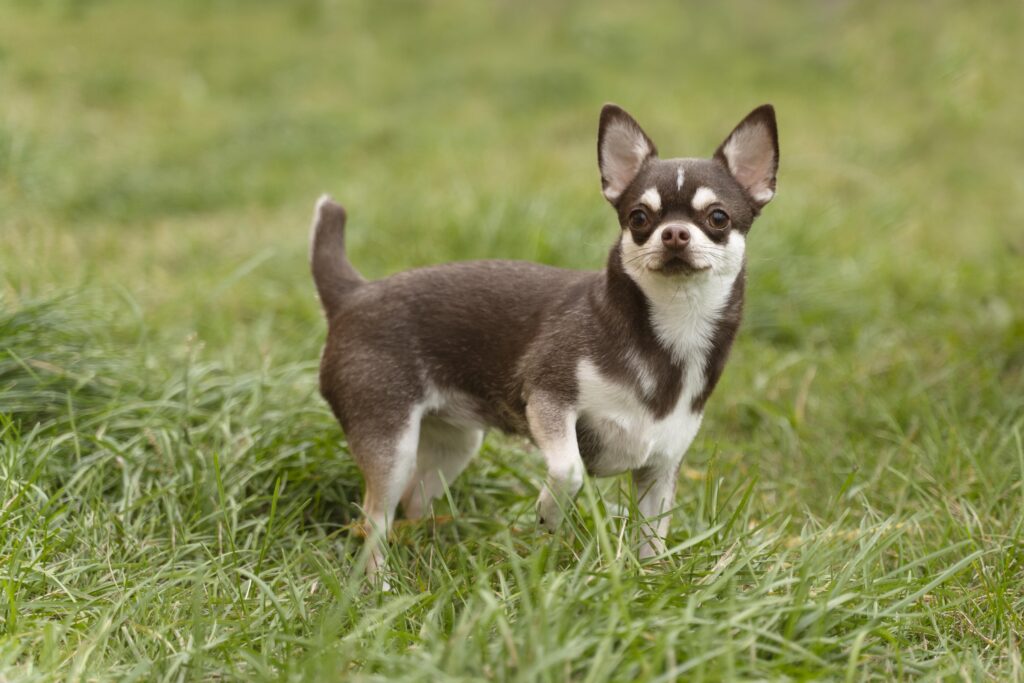
Size & Appearance
- Weight: not to exceed 6 lb (≈ 2.7 kg) for show dogs under AKC standard.
- Coat types: smooth (short) or long. Coat color and pattern vary widely.
- Distinctive features: “apple-head” skull, erect ears, expressive eyes. Some Chihuahuas have a soft spot (molera) that persists into maturity.
Temperament & Behavior
- Loyal, affectionate to family; alert and can be protective.
- Energetic, needs regular activity (short walks or indoor play), despite small size.
- May be vocal; tends to bark or react to unfamiliar people or dogs.
Health & Lifespan
- Lifespan: often 12-20 years, depending on care.
- Common issues: dental overcrowding, patellar luxation, heart conditions, hypoglycemia in pups.
- Molera (persistent fontanelle) is breed standard in some registries but may correlate with neurological issues.
Grooming & Care
- Smooth‐coated variety: occasional brushing; bathe as needed.
- Long‐coated variety: weekly brushing to avoid mats; coat may require more effort.
- Dental hygiene is essential (small mouth leads to plaque).
Best Lifestyle Matches
- Urban dwelling, apartments due to small size.
- Owners who can give individual attention.
- People comfortable with frequent handling, grooming and early socialization.
2. Yorkshire Terrier (Yorkie)
Compact, stylish, and full of confidence, Yorkies are a favorite among city dwellers. With their silky coats and spirited personalities, they make affectionate companions but require consistent grooming and attention.
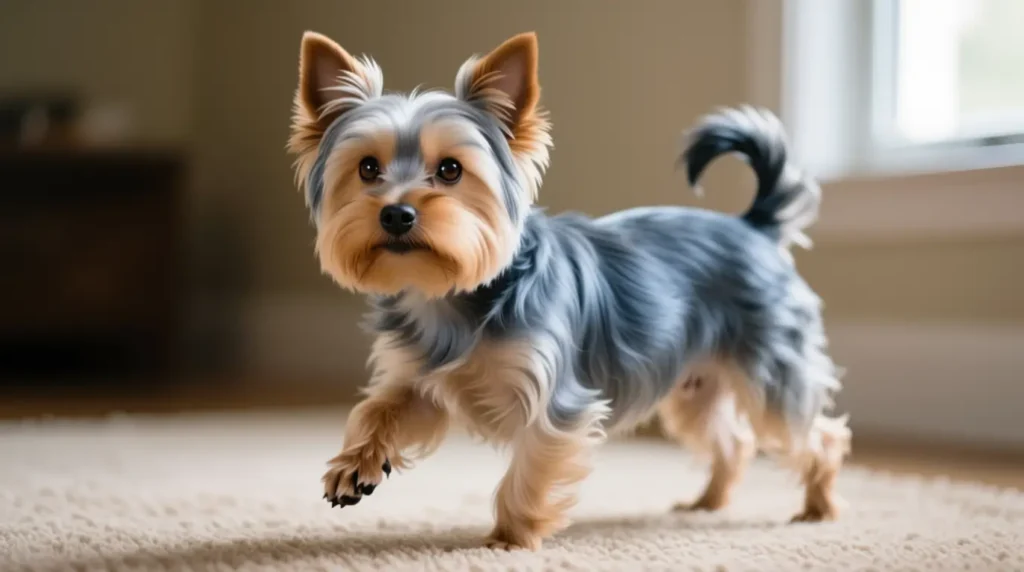
Size & Appearance
- Adult weight: typically 4-7 lb (≈ 1.8-3.2 kg).
- Coat: long, silky, non-hypoallergenic though low shedding; requires regular grooming.
Temperament & Behavior
- Energetic, alert, confident; tends to bond strongly with owner.
- Can be vocal, territorial; early training helps manage barking.
Health & Lifespan
- Lifespan: around 11-15 years.
- Common health issues:
- Hypoglycemia in puppies.
- Dental disease (plaque, periodontal disease).
- Patellar luxation.
- Tracheal collapse (especially under collar pressure).
- Portosystemic liver shunt in some lines.
Grooming & Care
- Daily brushing or frequent to avoid tangles and matting in coat.
- Dental care are important: regular tooth brushing and checkups.
Best Lifestyle Matches
- Urban dwelling, apartments due to small size.
- Owners who can give individual attention.
- People comfortable with frequent handling, grooming and early socialization.
3. Yorkshire Terrier (Yorkie)
Compact, stylish, and full of confidence, Yorkies are a favorite among city dwellers. With their silky coats and spirited personalities, they make affectionate companions but require consistent grooming and attention.

Size & Appearance
- Adult weight: typically 4-7 lb (≈ 1.8-3.2 kg).
- Coat: long, silky, non-hypoallergenic though low shedding; requires regular grooming.
Temperament & Behavior
- Energetic, alert, confident; tends to bond strongly with owner.
- Can be vocal, territorial; early training helps manage barking.
Health & Lifespan
- Lifespan: around 11-15 years.
- Common health issues:
- Hypoglycemia in puppies.
- Dental disease (plaque, periodontal disease).
- Patellar luxation.
- Tracheal collapse (especially under collar pressure).
- Portosystemic liver shunt in some lines.
Grooming & Care
- Daily brushing or frequent to avoid tangles and matting in coat.
- Dental care are important: regular tooth brushing and checkups.
Best Lifestyle Matches
- Apartments or small homes, due to small size.
- Owners who can invest time in grooming and dental care.
- Households that can manage a high-attention, delicate dog.
4. Pomeranian
The fluffy, fox-like Pomeranian is an energetic toy breed with a bold personality. Despite their small size, they’re lively, social, and make excellent watchdogs while fitting perfectly into apartments or small homes.
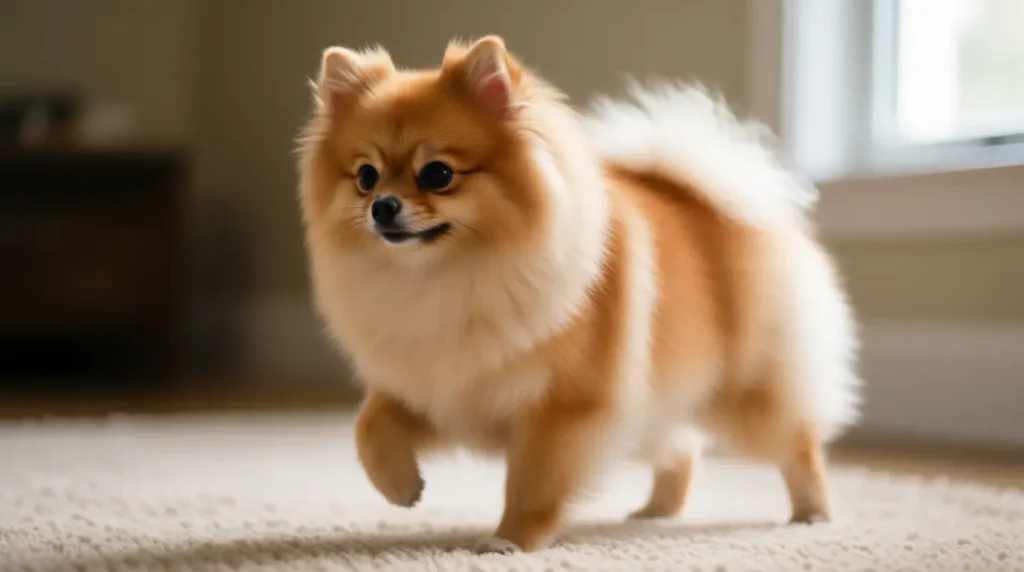
Size & Appearance
- Adult weight: 3–7 lb; ideal show weight ~4–6 lb.
- Appearance: compact body, thick double coat, plumed high-set tail, foxy face with erect ears. Breed standard describes square proportions.
- Lifespan: ~12–14 years in general.
Temperament & Behavior
- Personality: vivacious, intelligent, alert, social. Enjoys being lap dog, yet active in short bursts.
- Suitability: fits well in apartments or suburbs. Better for families with older children who understand small-dog fragility.
Health & Common Issues
- Common issues: dental problems (due to small mouths), luxating patellas, collapsed trachea, hypoglycemia in pups. (These are common in toy breeds including Pomeranians.) While a specific study here isn’t cited in the references pulled, breeders note these as recurring concerns.
- Grooming demands: heavy brushing needed to prevent matting. Double coat sheds; seasonal shedding more intense.
Best Fit Lifestyle
- Ideal for people who can spend time grooming or take dog to professional groomer.
- Good for smaller homes or apartments due to size.
- Better with experienced small-dog owners who understand handling and fragility.
5. Shih Tzu
Bred as royal lap dogs, Shih Tzus are affectionate companions with luxurious coats. They thrive indoors, enjoy human company, and make gentle, loving pets for families and seniors alike.
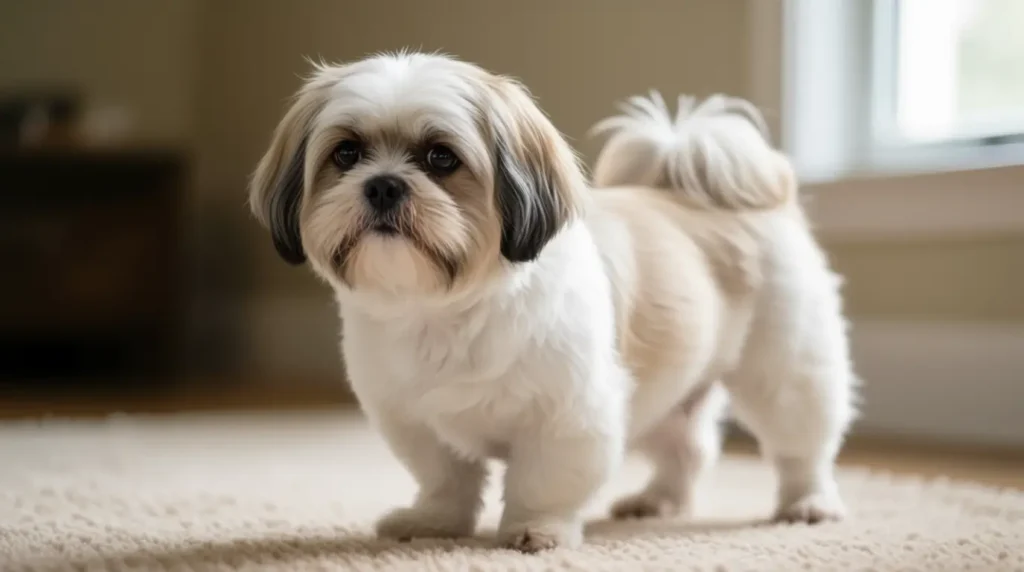
Size & Appearance
- Adult weight: average ~12-18 lb (≈5.4-8.2 kg).
- Coat: long, luxurious double coat; may be kept in shorter “puppy cut” for easier management. Floppy ears, large eyes, brachycephalic (short muzzle) facial structure.
Temperament & Behavior
- Personality: affectionate, friendly, good companion dogs. Adaptable to indoor lifestyle; enjoys being around people.
- Activity level: moderate. Short daily walks, indoor play; sensitive to heat due to brachycephalic build.
Health & Common Issues
- Brachycephalic Syndrome: Short nose causes breathing difficulty, overheating risk.
- Eye Conditions: Corneal ulcers, cataracts, dry eye, general irritation due to prominent eyes.
- Dental Disease/Poor Oral Condition: Small mouth, crowded teeth → higher risk of periodontal disease.
- Other Issues: Patellar luxation, ear infections, risk of obesity.
Grooming & Care
- Coat care: daily brushing if kept long; weekly bathing; trim around eyes to avoid irritation.
- Grooming costs: professional grooming necessary if coat is kept full length.
- Temperature sensitivity: avoid exposure to high heat/humidity. Ventilate, avoid strenuous exercise in heat.
Best Fit Lifestyle
- Good for families who want a loving indoor companion.
- Excellent for senior owners or people who spend much time at home.
- Less suited to very active lifestyles or extreme outdoor conditions unless precautions are taken.
6. Maltese
The Maltese is a playful, affectionate breed with a signature long, white coat. Known for their gentle nature, they are perfect for apartment living and form strong bonds with their owners.
Size & Appearance
- Adult weight: under 7 pounds; preferred weight is 4–6 pounds.
- Coat: long, silky, pure white; no undercoat; coat may touch ground; light tan or lemon allowed on ears.
- Structure: compact body; drop ears heavily feathered; tail is plume carried over back; head hair may be tied up.
Temperament & Behavior
- Nature: affectionate, gentle, playful, lively. Adaptable companion.
- Intelligence & Training: responds well to praise; alert watchdog behavior despite small size.
Health & Lifespan
- Lifespan: approximately 12-15 years.
- Common concerns: dental problems, luxating patellas, possible eye issues; no heavy shedding due to single coat.
Grooming & Care
- Grooming: daily brushing to avoid mats; regular baths to maintain a coat.
- Maintenance options: coat can be clipped (puppy cut) for easier care.
Best-Fit Lifestyle
- Best for households where someone is present often (due to strong attachment).
- Suited to apartment living; moderate exercise (short walks, indoor play).
- Less ideal for families wanting a very rugged or outdoor-focused working dog.
7. Miniature Schnauzer
This sturdy, intelligent breed is friendly and adaptable. With their wiry coats and iconic beards, Miniature Schnauzers make excellent watchdogs while still being playful family companions.
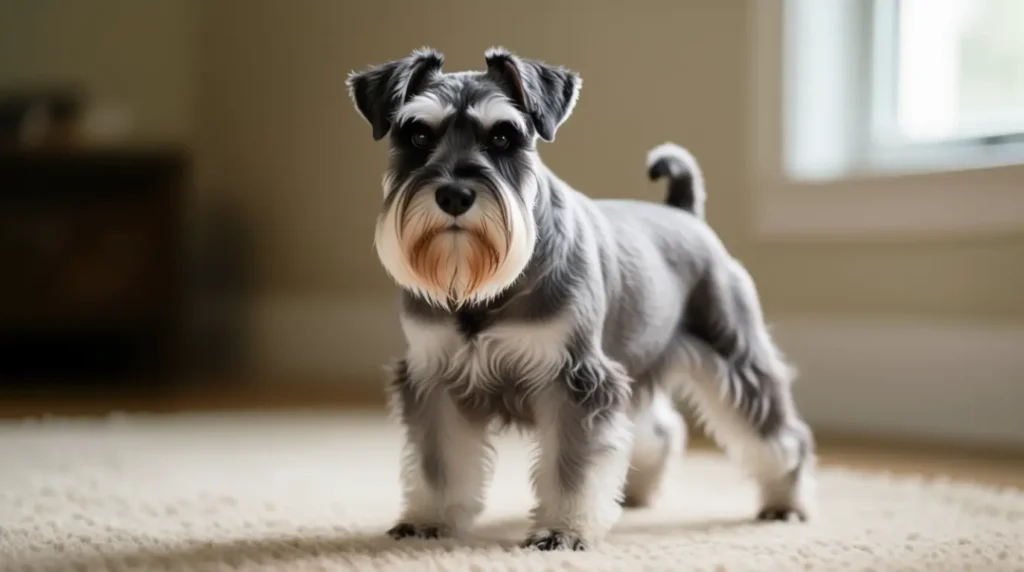
Size & Appearance
- Adult height: 12–14 inches at the shoulder; adult weight: under 20 pounds.
- Coat: double coat (wiry outer coat + soft undercoat). Recognized colors include salt & pepper, black & silver, and solid black.
Temperament & Behavior
- Intelligent, friendly, obedient; acts alert and spirited. Good with family, adapts well to different environments.
- Requires mental stimulation and regular exercise (e.g., daily walks or play). Tends to bark if not socialized.
Health & Lifespan
- Generally healthy; lifespan often in the range of 12–15 years.
- Common issues: eye problems, skin sensitivities, patellar luxation.
Grooming & Care
- Grooming: requires regular brushing, trimming; facial furnishings (beard, eyebrows) require maintenance.
- Coat care options: show trim vs shorter “pet clip” depending on lifestyle.
Best Fit Lifestyle
- Good for families or individuals who want a small but active dog; fits well in apartments if exercise needs met.
- Suitable for allergy-prone households (lower shedding compared to many others) because of its wiry coat.
8. Pug
Charming, comical, and affectionate, Pugs are loved for their wrinkled faces and cheerful nature. They adapt well to small homes but need careful monitoring in hot weather due to their flat noses.
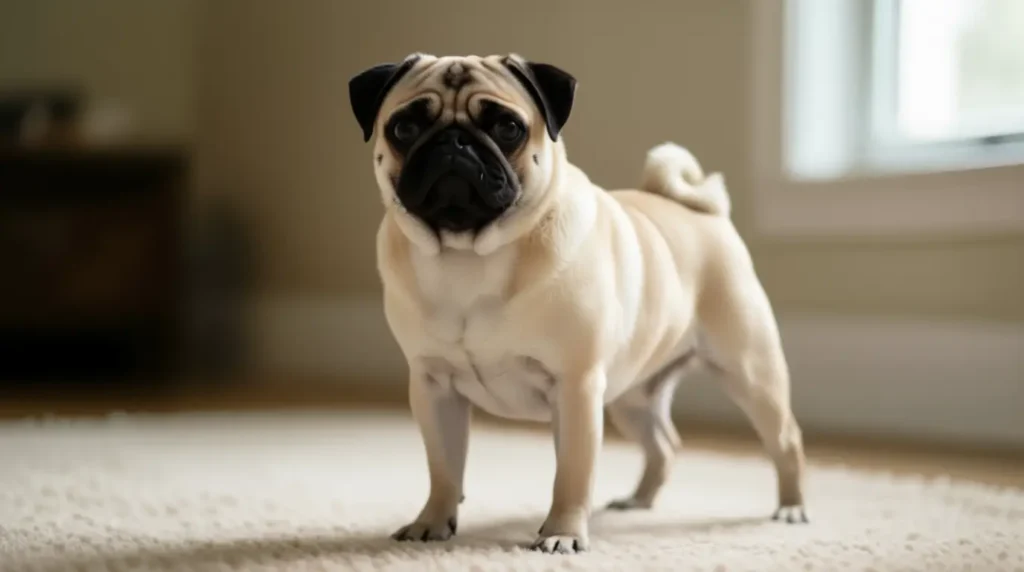
Size & Appearance
- Adult weight: 14–18 pounds; height: ~10–13 inches at the shoulder. Compact, square build.
- Coat: short, smooth, fine; common colors are fawn or black. Wrinkled face, large round eyes, curled tail.
Temperament & Behavior
- Even-tempered, playful, loving; bred to be companion dogs. Sensitive to owner’s mood. Prefer human company.
- Can be stubborn; early socialization and positive reinforcement training are beneficial.
Health & Lifespan
- Lifespan: around 12-15 years.
- Common issues: breathing problems (due to brachycephalic muzzle), eye injuries, overheating, skin fold issues.
Grooming & Care
- Coat care: minimal grooming required; regular cleaning of facial wrinkles to prevent infections.
- Exercise: moderate. Short walks, indoor activity; avoid overexertion in heat.
Best Fit Lifestyle
- Best for households where dog will get attention. Pugs dislike being left alone for long times.
- Suitable for urban living or smaller homes due to size.
9. Papillon
Named for their butterfly-like ears, Papillons are elegant, intelligent, and highly trainable. Their lively personalities make them a great choice for active owners who enjoy agility and play.
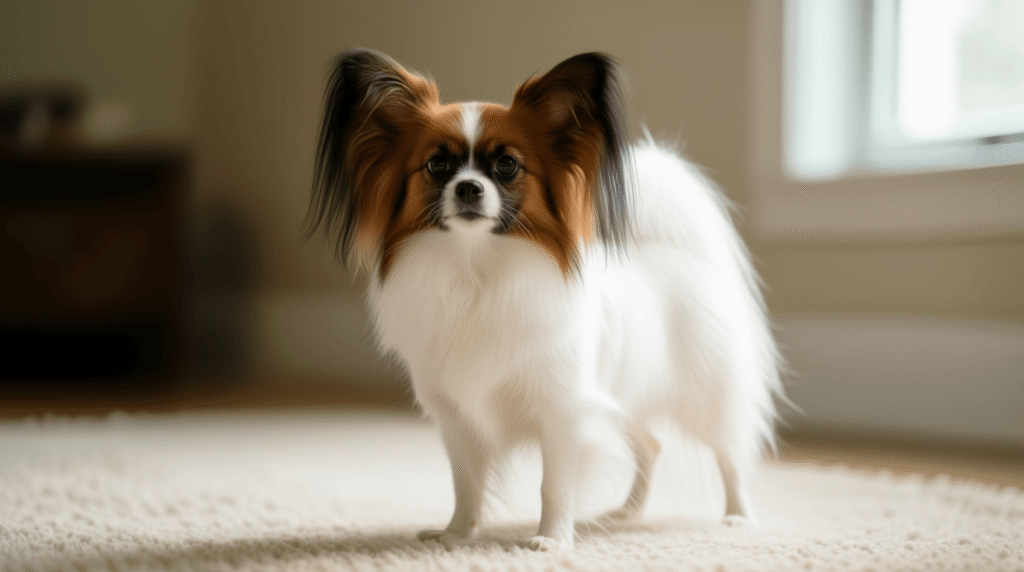
Size & Appearance
- Height at the shoulder: 8–11 inches.
- Weight: 5–10 pounds in many healthy adults
- Coat: long, silky, single-layer; licorice masking and white markings common. Erect ears (“butterfly ears”) or drop ears (“Phalène” type).
Temperament & Behavior
- Intelligent, alert, lively; excels in agility, obedience, and dog sports.
- Affectionate with family; good with children if handled gently; may be vocal. Boredom or lack of training can lead to nuisance barking.
Health & Lifespan
- Lifespan: ~14-16 years with proper care.
- Common issues: patellar luxation, dental problems, risk of progressive retinal atrophy and intervertebral disk disease.
Grooming & Care
- Grooming: weekly brushing required; more frequent if coat is kept long. Clean ears and eyes regularly.
- Exercise: daily mental stimulation plus walks; suits apartment living if exercise needs are met.
Best Fit Lifestyle
- Ideal for attentive owners who enjoy training and interactive play.
- Good for smaller living spaces (apartments) because of compact size and manageable exercise needs.
- Less suited to rough play or households with very small children without oversight, due to delicate build.
10. Havanese
Known as Cuba’s national dog, the Havanese is friendly, sociable, and affectionate. With their soft, wavy coats and playful charm, they adapt well to city life and love family interaction.
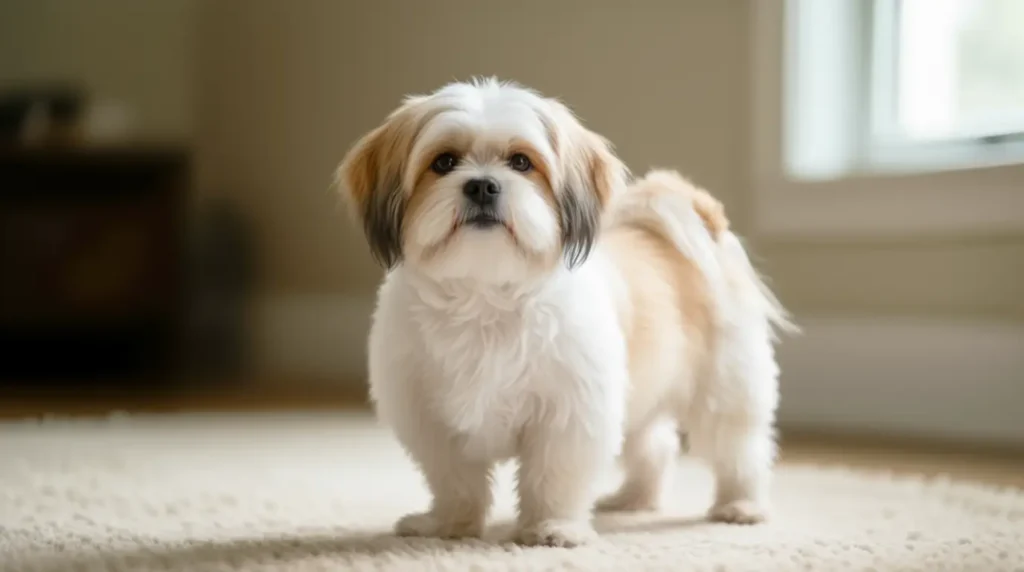
Size & Appearance
- Height: 8.5 – 11.5 inches at the shoulder; ideally 9-10½ inches.
- Weight: 7-13 pounds typical adult range.
- Coat: long, double coat, soft, silky, variable in color; may be wavy or straight.
Temperament & Behavior
- Friendly, affectionate, intelligent, playful. Excels as a companion breed.
- Moderate energy; requires daily walks and play. May bark if under-stimulated.
Health & Lifespan
- Lifespan: 14-16 years common with good care.
- Common health issues: progressive retinal atrophy, Legg-Calve-Perthes disease (particularly in puppies <18 months), potential for separation anxiety.
Grooming & Care
- Daily brushing recommended to prevent matting. Coat may be trimmed for easier maintenance.
- Exercise & socialization: short play sessions and walks; good mental stimulation supports behavior.
Best Fit Lifestyle
- Ideal for households seeking a small, affectionate companion.
- Works well in apartments or small homes if grooming and mental engagement are maintained.
- Good family pet or for individuals wanting a sociable dog with moderate exercise.
11. Basenji
Often called the “barkless dog,” the Basenji communicates with unique yodel-like sounds. Independent yet affectionate, this energetic breed needs plenty of exercise and mental stimulation.
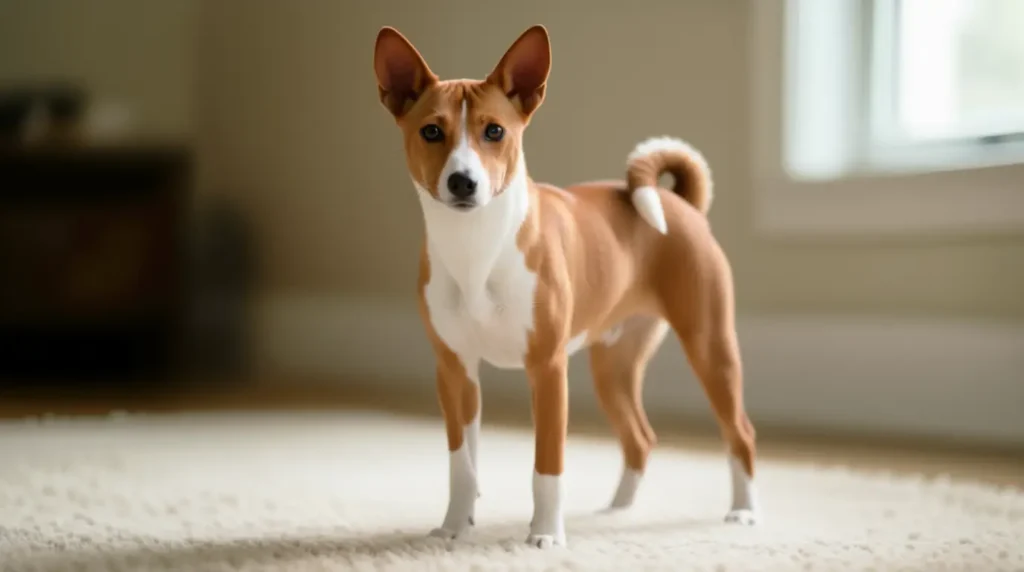
Size & Appearance
- Adult weight: approximately 20–24 lb; height: about 16–18 in at shoulder.
- Coat: short, fine, single coat; erect ears; tightly curled tail; forehead wrinkles are common.
Temperament & Behavior
- Independent, intelligent, curious; exhibits “cat-like” grooming behavior.
- Quiet for a dog breed; does not bark in usual way but may produce a yodel-like vocalization.
- Energetic; can become destructive or bored if insufficient exercise or mental stimulation.
Health & Lifespan
- Life expectancy: ~13.6 years in UK survey
- Health issues: Fanconi syndrome (kidney reabsorption disorder), progressive retinal atrophy, in some lines hip dysplasia; sensitive to dietary and environmental stress.
Grooming & Care
- Grooming: low maintenance; regular brushing requires to remove loose hair; ears and hygiene need monitoring.
- Exercise needs: moderate to high; Basenjis need space and mental games, climbing or jumping outlets.
Best Fit Lifestyle
- Suited for owners experienced with independent, less trainable breeds.
- Good in homes with energetic play opportunities, secure fencing, and mental enrichment.
- Less suited for households expecting constant affection or who need a quiet, relaxed lap dog.
12. West Highland White Terrier (Westie)
The Westie is a confident, playful terrier with a bright white coat. Originally bred as hunters, they are spirited companions that fit well into active families and small homes.
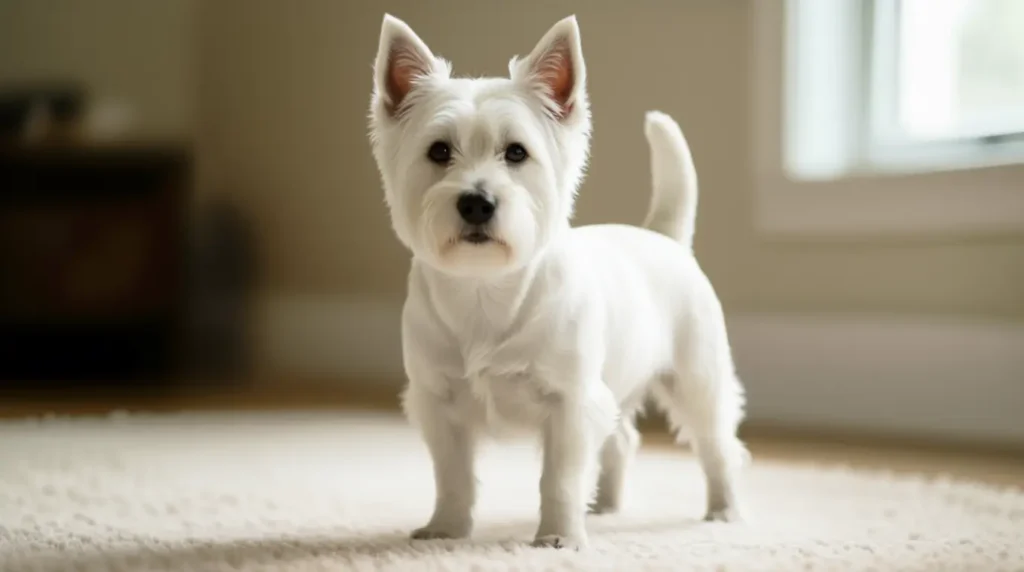
Size & Appearance
- Adult weight: 15-20 lb; height: ~10-11 in at shoulder.
- Coat: white double coat – harsh outer coat, dense soft undercoat; roots in working terrier heritage.
Temperament & Behavior
- Confident, alert, playful; strong prey drive; independent and intelligent, but can show stubbornness.
- Good with families if socialized early; may not tolerate rough handling or very young children without supervision.
Health & Lifespan
- Life expectancy: ~13-15 years.
- Common health issues: skin allergies (atopic dermatitis), “Westie jaw” (craniomandibular osteopathy), risks of ear infections due to coat, occasional genetic conditions.
Grooming & Care
- Requires regular grooming: weekly brushing, monthly trimming or hand stripping of coat to maintain texture.
- Needs consistent exercise: daily walks and play for about 20-40 minutes.
Best Fit Lifestyle
- Works well in small homes or apartments if activity and attention are provided.
- Good for owners who enjoy grooming or don’t mind maintenance.
- Suits active pets and families who can channel Terrier instinct (prey drive, digging) positively.
13. Beagle
Friendly, curious, and always led by their noses, Beagles are pack-loving companions. Their manageable size and cheerful nature make them great family dogs with moderate exercise needs.
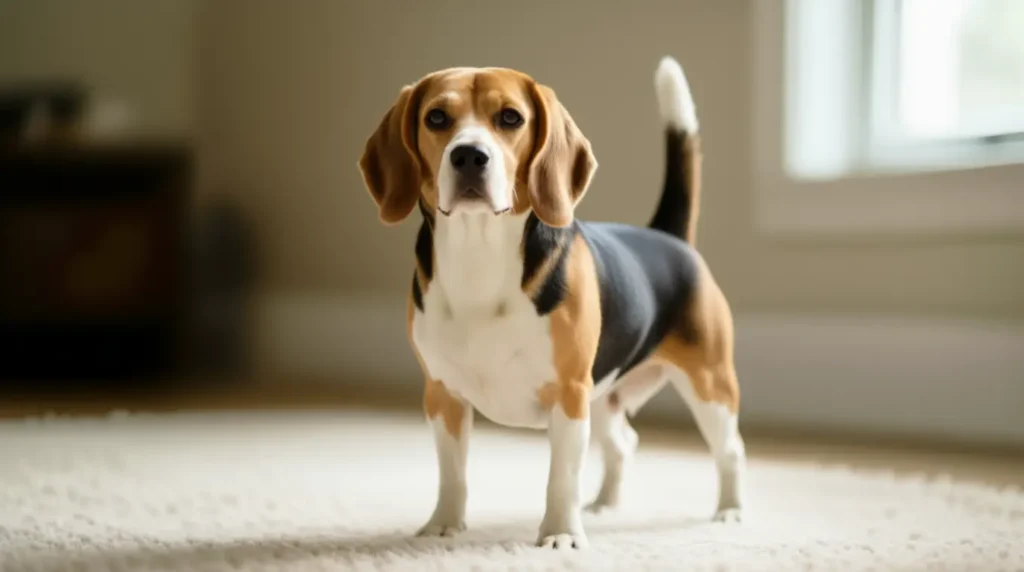
Size & Appearance
- Height: approximately 13-15 inches at withers for standard varieties.
- Adult Weight: typically 20-25 lb depending on variety and gender.
- Coat: short, dense, weather-resistant. Common colors: tricolor (black, white, tan), lemon & white.
Temperament & Behavior
- Sociable, friendly, good with children. Beagles form strong bonds and enjoy companionship.
- Curious, scent-driven, may follow smells. Requires mental stimulation and secure fencing.
- Eager to please but can show stubbornness; positive reinforcement training works best.
Health & Lifespan
- Average lifespan: 12-15 years in favorable conditions.
- Common issues: ear infections (due to drooping ears), obesity if overfed or under-exercised, possible epilepsy or hypothyroidism in some lines.
Grooming & Care
- Grooming needs: low-maintenance; weekly brushing; regular ear cleaning.
- Exercise: daily walks and play; Beagles are active and need both physical and mental outlets.
Best Fit Lifestyle
- Ideal for active individuals or families who can commit time to walks, play, and training.
- Suited for homes with a yard or safe walking paths due to scent drive.
- Works well in moderate climates; supervision required in hot weather due to coat type and activity.
14. Norfolk Terrier
One of the smallest terriers, the Norfolk Terrier is fearless and affectionate. With their wiry coats and playful energy, they are excellent for owners who want a small but spirited dog.
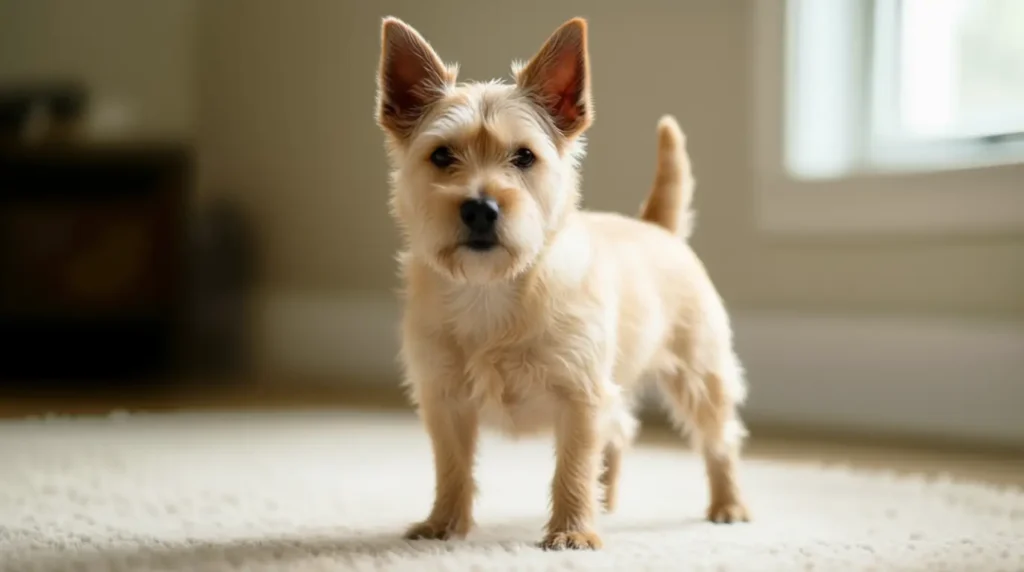
Size & Appearance
- Height: 9-10 inches at the shoulder.
- Weight: about 11-12 lb as adult average.
- Coat: Hard, wiry outer coat; protective texture; colors include red, wheaten, black & tan, grizzle. Drop ears (folded ears) are characteristic.
Temperament & Behavior
- Feisty, alert, confident; retains working-terrier instincts, including rattering and curiosity.
- Loyal with family; good with children if socialized early. Enjoys play and mental engagement.
Health & Lifespan
- Lifespan: approx 13.5 years in surveyed populations.
- Common issues: skin sensitivity or allergies, ear care (due to ear type and coat), possible eye problems. (Less documented than many breeds, but consistent with terrier group traits.
Grooming & Care
- Coat maintenance: weekly combing to remove loose hairs; seasonal hand-stripping recommended to preserve coat texture. Clipping may degrade coat quality.
- Exercise requirement: moderate; brisk walks and play; terrier energy may lead to digging or chasing if not mentally satisfied.
Best Fit Lifestyle
- Suitable for people who like a small dog with personality and moderate energy.
- Works in small homes with daily activity; enjoys interacting with people.
- Ideal for environments with vigilance to grooming and mental stimulation.
15. West Highland White Terrier
Once palace companions in China, Pekingese are dignified, independent, and loyal. Their lion-like manes and affectionate nature make them unique companions best suited for calm households.
Size & Appearance
- Weight: ~15-20 lb; Height: ~10-11 in at shoulder. Compact, well-boned body, white double coat (harsh outer coat, soft undercoat).
Temperament / Behavior
- Confident, spirited, alert. Strong prey-drive due to terrier origin. Likes digging, chasing, and exploring.
- Friendly and social but may not tolerate very rough handling from young children. Training helps manage stubbornness.
Lifespan & Health
- Life expectancy: ~12-15 years.
- Health concerns:
• Craniomandibular osteopathy (“Westie jaw”) in puppies
• Skin disorders: atopic dermatitis; hyperplastic dermatosis.
• Other conditions: hip dysplasia; liver issues such as copper storage disorder. Breed health statements recommend hip X-ray screening and other genetic tests.
Grooming & Maintenance
- Coat care: Regular brushing and grooming to maintain coat texture; trimming and cleaning facial folds.
- Exercise: Needs ~1 hour daily of walks or play; energy levels moderate.
16. Miniature Pinscher
Often called the “monkey dog” due to their expressive faces, Affenpinschers are curious, bold, and mischievous. They make excellent small watchdogs with plenty of personality in a tiny frame.
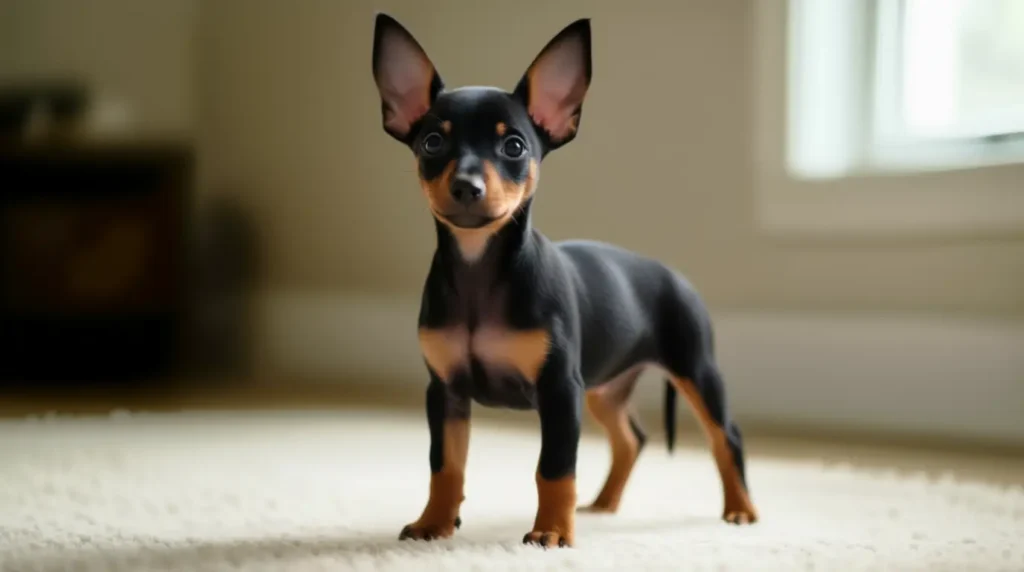
- Size & Appearance: Stands about 10-12.5 inches at the shoulder; weight ~8-10 lb. Coat is short, smooth, shiny. Color options include solid red, stag red, black & rust, chocolate & rust.
- Temperament & Behavior: Highly energetic, fearless, alert. Known for the “hackney gait” (prancing-step walk). Needs mental stimulation and training to prevent stubborn or escape behaviours.
- Health & Lifespan: Typically lives 12-16 years. Common health concerns include obesity if overfed, dental issues, potential for bone fractures due to delicate build.
- Care & Grooming: Minimal grooming; short coat requires weekly brushing; needs protection in cold weather; nails, ears, teeth require regular upkeep. Exercise is essential: daily walks or play; apartment life possible if energy vented.
17. Pekingese
The cheerful Bichon Frisé is a cloud-like dog with a hypoallergenic coat. Friendly, affectionate, and playful, they are perfect for families and allergy-sensitive homes.
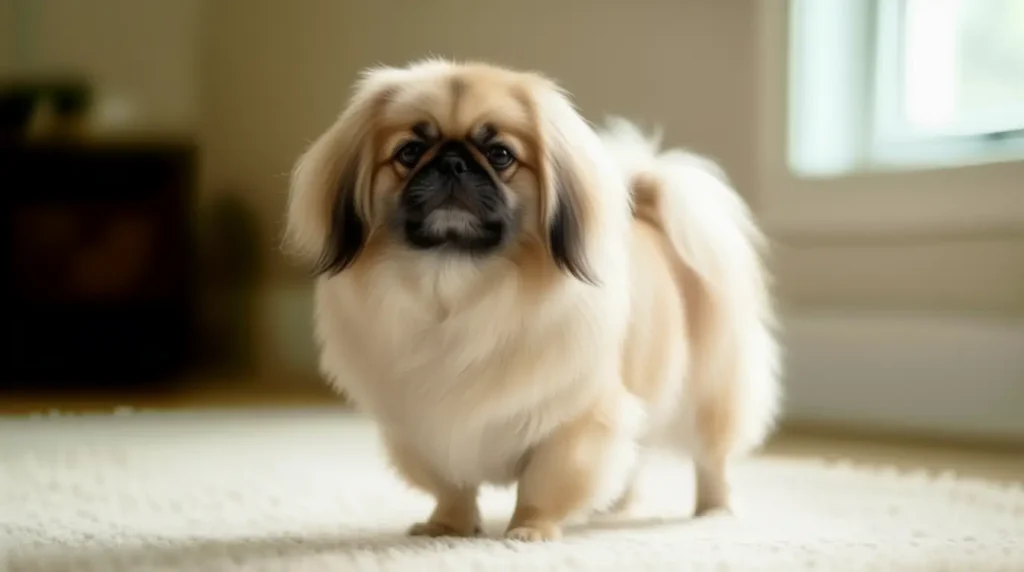
- Size & Appearance: Weighs up to 14 lb; height around 6-9 inches at the withers. Long double coat; characteristic flat face (brachycephalic); lion-like mane, stocky body.
- Temperament & Behavior: Independent, dignified, loyal; can be stubborn. Suited for indoor life; enjoys companionship, but may be aloof with strangers. Less tolerant of high activity.
- Health & Lifespan: Lives about 12-14 years on average. Health issues include respiratory difficulties, eye problems, skin fold infections, overheating. Daily care of facial wrinkles and regular veterinary checks important.
- Care & Grooming: Needs frequent grooming of coat and mane to avoid mats. Bathing and trimming as needed; when kept long, grooming expense higher. Exercise minimal; avoid heat and humidity; short walks okay.
18. Miniature Schnauzer
Graceful and affectionate, Cavaliers are gentle lap dogs that love companionship. With their silky coats and calm nature, they adapt easily to families, singles, or seniors.
- Size & Appearance: Height ~11-14 inches; weight ~10-20 lb. Square, compact build, wiry outer coat + soft undercoat. Common colors: black, salt and pepper, black & silver. Characteristic beard and eyebrows.
- Temperament & Behavior: Spunky, alert, outgoing, good watchdog instincts without aggression. Intelligent; responds well to training; enjoys being part of family activities.
- Health & Lifespan: Generally healthy; lifespan typically around early to mid-teen years. Potential health concerns include skin issues, eye problems, patellar luxation.
- Care & Grooming: Requires regular grooming: trimming, brushing; keeping the beard clean; coat maintenance for show vs pet trim. Moderate exercise needed.
19. Affenpinscher
Compact, muscular, and low-energy, French Bulldogs are one of the most popular urban pets. Known for their bat ears and affectionate nature, they’re perfect for city apartments.
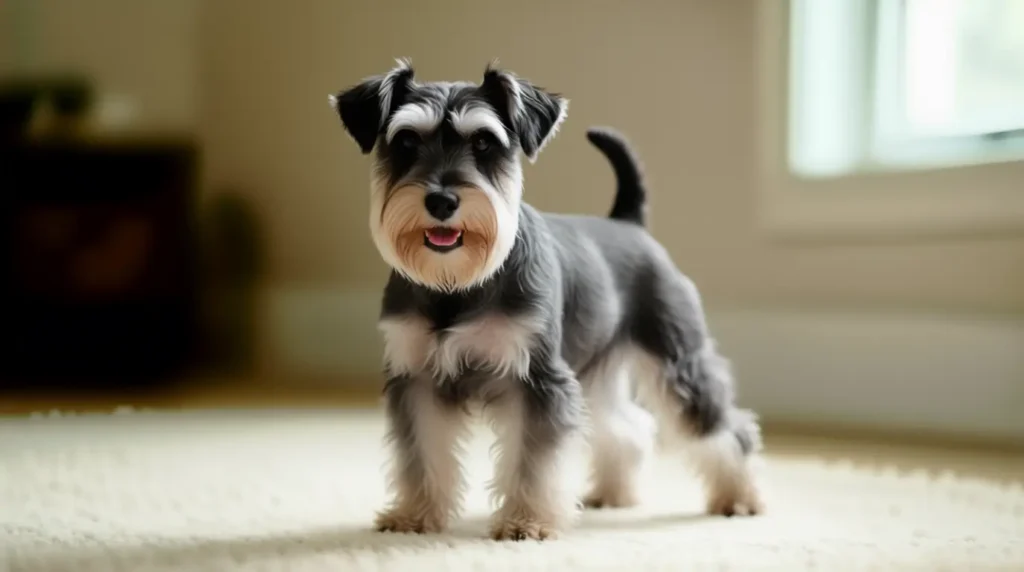
- Size & Appearance: Small toy breed; short legs; wiry, rough coat; often black or dark in color. Build is sturdy and compact.
- Temperament & Behavior: Mischievous, curious, lively. Originally bred as ratters; now companion dogs. Tends to act like a watchdog; may have strong personality for small size.
- Health & Lifespan: Lifespan often in the range of 12-15 years. Prone to dental problems, patellar luxation, sometimes respiratory issues.
- Care & Grooming: Requires wire-coat grooming: hand stripping or trimming, regular brushing to avoid matting. Moderate exercise and mental stimulation. Compact size makes apartment life doable.
20. Bichon Frisé
The playful, long-bodied Dachshund was originally bred for hunting, but today they are affectionate companions. Loyal, brave, and adaptable, they thrive in both apartments and houses.
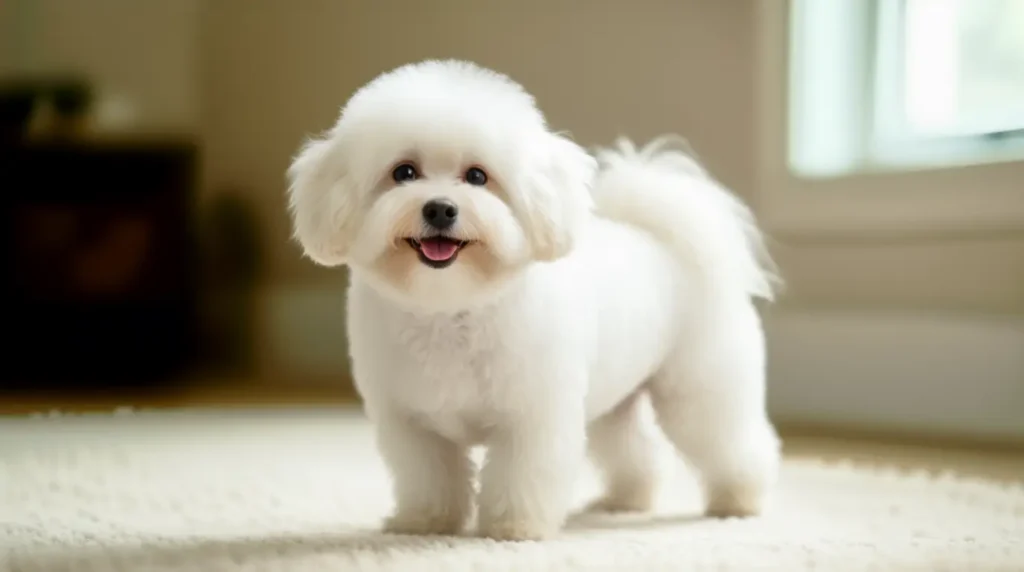
Size & Appearance
- Weight: 12–18 lb; Height: 9.5–11.5 in at shoulder. Compact, sturdy body with a rounded head and plumed tail. (akc.org)
- Coat: Soft, dense, curly double coat that is hypoallergenic and always white.
Temperament & Behavior
- Cheerful, playful, affectionate. Known as the “powder puff” dog. Excellent with children and other pets. (akc.org)
- Intelligent and easy to train with positive reinforcement methods.
Health & Lifespan
- Lifespan: 14–15 years with good care.
- Health concerns: prone to allergies, luxating patella, dental disease, and bladder issues. (vet.cornell.edu)
Grooming & Care
- Requires regular grooming: brushing several times per week and professional grooming every 4–6 weeks.
- Moderate daily exercise through walks and playtime keeps them healthy.
Best Fit Lifestyle
- Perfect for apartments and families who can dedicate time to grooming.
- Great choice for allergy-sensitive households due to low-shedding coat.
